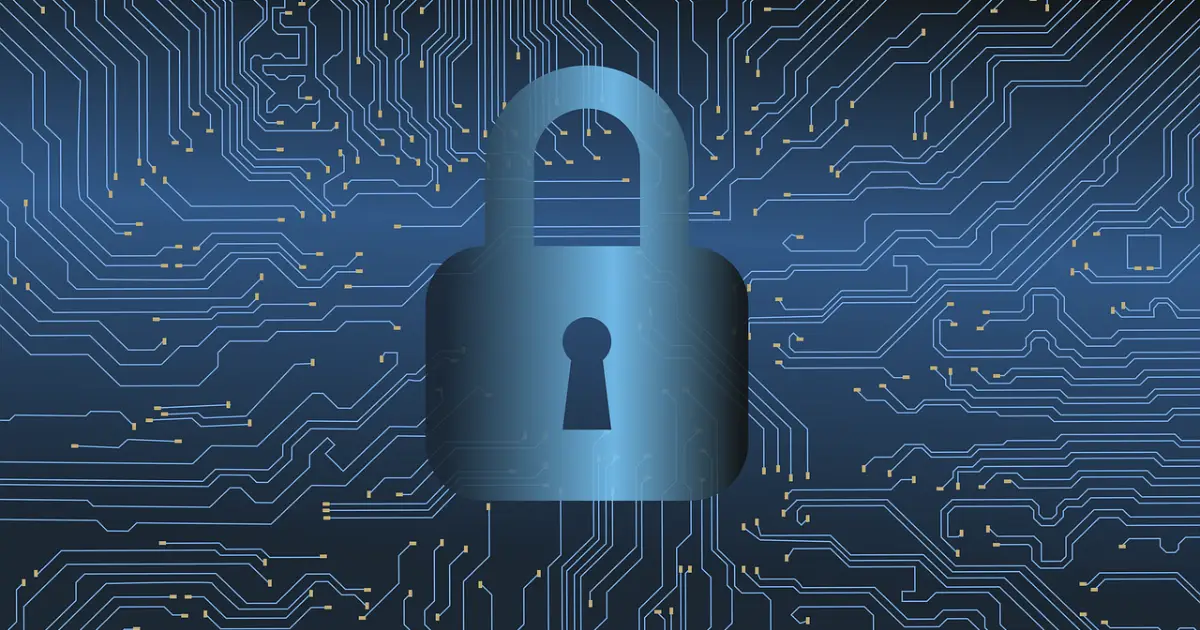focus notes


12 security measures for IoT! Also explains why guidelines and equipment should be followed.

table of contents
"I don't know what concrete measures to take when it comes to IoT security measures."
“I wonder if security measures are necessary for IoT in the first place?”
When introducing IoT, some people may be worried about security measures as mentioned above. IoT is a technology that is useful for improving convenience and streamlining business operations, but because it is connected to the Internet, it increases the risk of cyber attacks. If you are attacked by a cyberattack, you may suffer damage such as device hijacking or information leakage.
To prevent cyber-attacks, it is necessary to take measures in accordance with the IoT security measures guidelines created by the government.For example, security measures are required, such as building an environment that makes IoT less susceptible to attacks and using systems that can detect attacks.
Therefore, in this article, we will explain how to take security measures for IoT and why they should be taken. If you are concerned about IoT security measures, please refer to this page.
Operation according to guidelines, etc.! IoT security measures
We will explain the following 12 methods as IoT security measures.
- Build a secure environment
- Be sure to change from the initial settings
- Update password
- Perform firmware updates regularly
- Carefully check the operations requested by the app
- Use a VPN for remote access
- Use products that detect device anomalies and protect against unauthorized access
- Use a product with program tampering detection function
- Use in accordance with security guidelines
- Turn off devices that are not in use
- Completely delete data when disposing of IoT devices
- Refrain from using suspicious services that do not have support or contact points.
Build a secure environment
When implementing IoT security measures, let's build a strong security environment. Depending on the IoT device you have introduced, it may be difficult to retrofit security measures to the device itself.
First, many IoT devices run on embedded systems, which have limited processing power and storage capacity, so installing additional powerful security software may not be possible. Also, different devices often use different operating systems and protocols, and this diversity can make it difficult to apply uniform security measures.
Given these circumstances, it is necessary to take security measures not only for the IoT device itself, but also for the surrounding environment, such as networks and servers.
Network segmentation is recommended as a countermeasure for this. Network segmentation is a technology and method that strengthens security and streamlines network management by dividing a network into multiple segments. By isolating different types of traffic and devices into separate segments, you can limit unauthorized access and reduce potential security risks.
However, the measures that can be taken will vary depending on the IoT system being introduced. Be sure to build a security-rich environment while taking into consideration compatibility with the IoT system.
Be sure to change from the initial settings
One security measure is to always change the default settings.If you use it with the default settings, the security may be weak and you may be susceptible to cyber attacks.
Some IoT devices come with pre-set IDs and passwords required for use. The default IDs and passwords may be simple and easy to guess. Therefore, if you use the devices with the default settings, there is a high risk of unauthorized access.
However, by changing the settings to any value, you can reduce the risk of such unauthorized access. In particular, if your ID and password are difficult to guess, you can further reduce the risk of cyber attacks.
It is also important to change the functions from the initial settings. For devices with multiple functions, all functions may be available by default. Enabling functions that are not originally required may increase communication frequency and operation, making the device more susceptible to cyber attacks. Instead of using the default settings, use only the functions you need.
Update password
As part of your IoT security measures, update your passwords as appropriate.Updating your password will make it harder for you to guess your password.
If you use the same password for a long time, if your ID and password combination is brute-forced, your authentication may be breached and you may be able to gain unauthorized access. Once unauthorized access has occurred, it is possible that unauthorized access may occur many times in the future.
However, by updating your password, you can reduce this risk. In the unlikely event that it is used for unauthorized access, changing it immediately will prevent the damage from spreading further.
When changing your password, it is not recommended to reuse passwords or change them to simple characters just because it is troublesome to remember them, as this increases the risk. Reusing passwords can be dangerous if the password is leaked from a service other than IoT.
When changing your password, we recommend that you use a complex password that contains a mixture of letters, numbers, and symbols. To reduce security risks, make your password difficult to guess.
To avoid being guessed, we recommend using a random mix of alphanumeric characters and symbols with at least 12 characters. Set a password that is difficult to guess by mixing upper and lower case letters and symbols.
Perform firmware updates regularly
Regularly updating firmware is also an effective security measure.By keeping the firmware up to date, you can expect enhanced security.
Firmware is software that runs the hardware built into electronic devices. It is embedded as a program inside the hardware.
Basically, firmware cannot be installed or uninstalled at the user's discretion. Programs cannot be rewritten and firmware is updated based on programs provided by the product manufacturer.
If you use outdated firmware, your device may be vulnerable to threats and become more susceptible to cyber attacks. For this reason, manufacturers regularly provide updated firmware to improve product vulnerabilities. Firmware update information will be notified by the manufacturer, so be sure to update when you receive a notification.
Carefully check the operations requested by the app
It is also important as a security measure to carefully check the operations requested by the app.There is a risk that the requested operations may have actually been tampered with as part of a cyber attack.
A typical method of cyber-attacks is to infect a website or app with malware by performing a specific operation. It behaves like a legitimate app, but if the user performs certain actions, it may be infected with malware and information may be extracted or destroyed.
In order to avoid falling into this kind of trick, it is important to carefully check the operations that the app requires. If the purpose of the operation is a cyber attack, you will be asked to perform an operation that would not otherwise be necessary. Typical examples include displaying fake warnings on the screen to trick you into downloading malicious apps or software.
At this time, it is essential to check whether the operation is really necessary. Instead of just doing what you're asked to do, always try to be suspicious of the possibility that it's a fake. If you cannot make a decision on your own, do not take the matter lightly and consult the police or a specialist.
Use a VPN for remote access
Using a VPN* for remote access is also an effective security measure.
*VPN is a virtual private line that can only be used by a limited number of users. If you compare it to a road, you can say that a public road is a common public road with a shared communication line that anyone can use, and a VPN is a private road hidden in the form of a tunnel.
By using a VPN, you can reduce the risk of intrusion from outside.
When accessing IoT remotely, using a shared communication line increases the risk of cyber attacks. There is also a risk that the data and history being communicated could be intercepted or rewritten.
However, communication using a VPN can reduce such risks. This is because using a VPN requires a special ID and password. Additionally, the lines connecting the locations are tunnel-shaped, which reduces the risk of communications being intercepted or tampered with.
However, be aware that VPNs may slow down your connection speed. Decreased communication speeds may reduce business efficiency or cause problems. Therefore, please consider the communication environment and amount of data to be communicated before introducing it.
Use products that detect device anomalies and protect against unauthorized access
As an IoT security measure, use a product that detects device abnormalities and prevents unauthorized access. If a product is equipped with security measures in advance, the effort and cost of retrofitting security can be reduced.
Many IoT devices have systems that are packaged, and security measures may not be able to be changed. For example, because IoT devices are purpose-built, users may have limited ability to change and customize their security settings. This creates a barrier when you need improved security features or customization.
However, if the following measures are taken on the device itself, the effort and cost of adding security measures later can be reduced.
- Unauthorized access detection
- multi-factor authentication
- Sensitive data encryption
- Automatically shuts down the network when an error occurs
To reduce the risk of cyber-attacks, choose a product that has security measures built into the device itself while reducing the burden of security measures.
Use a product with program tampering detection function
Using products with program tampering detection functionality is also one of the security measures for IoT.If a product can detect program tampering, it can respond to cyber-attacks at an early stage.
If a program does not have a tampering detection function, it will be discovered that the program has been tampered with and has suffered a cyber attack. As a result, responses may be delayed, leading to greater damage such as information leaks and hijacking.
If you have a program tampering detection function, you can quickly detect tampering and issue an alert to the administrator. This will allow you to quickly respond to tampering and minimize damage. Additionally, the ability to detect tampering with the system reduces the effort required to manage IoT.
Use in accordance with security guidelines
It is also essential for IoT security measures to follow the security guidelines published by the Ministry of Internal Affairs and Communications.Security guidelines are standard guides that provide guidelines and key points for security measures that should be taken to protect IoT from cyber attacks.
The guidelines state the importance of taking security measures and set out the following five guidelines for security measures:
Guidelines | Main points |
Guidelines 1 Establish basic policies that take into consideration the nature of IoT | Key Point 1. Management is committed to IoT security |
Guidelines 2 Recognize IoT risks | Key point 3. Identify what needs to be protected |
Guideline 3 Thinking about designs that protect what needs to be protected | Key Point 8: Create a design that can be protected both individually and as a whole. |
Guideline 4 Consider measures on the network | Point 13. Provide a function to understand and record the status of devices, etc. Point 14. Connect to the network appropriately according to function and purpose. |
Guideline 5 Maintain a safe and secure state and disseminate and share information. | Key point 17. Maintain safety and security even after shipment/release. Key point 18. Understand IoT risks even after shipment/release and communicate to relevant parties what they need to observe. |
Reference source: Ministry of Internal Affairs and Communications | IoT Security Guidelines ver 1.0 | Page 12 (as of February 5, 2024)
The guidelines provide key points and explanations for each step. Specific examples of countermeasures are also included, so it will be easier to imagine what kind of countermeasures should be taken.
The document also covers the points necessary to protect IoT from the threat of cyber attacks and use it safely. Whether you are a product developer or a user, be sure to follow the guidelines when using the product.
Turn off devices that are not in use
Another security measure is to turn off the power to IoT devices that are not in use.The system stops when the power is turned off, reducing the risk of external manipulation.
When the power is on, the system is running, which means it is connected to the network, so there is a risk of unauthorized access. However, if the equipment is turned off, the system is also stopped. Therefore, the system cannot be operated even if you try to operate it from the outside. Since the power is not turned on, risks such as virus infection can be prevented. Reducing the chances of being attacked will lead to a reduction in security risks.
If you create a list of devices at the time of installation, it will be easier to find devices that are not in use. Manage the installation locations and usage status of devices in a list so that you can quickly find devices that are not in use.
IoTCompletely delete data when disposing of the device
When disposing of IoT devices, be sure to completely delete the data.Complete deletion reduces the risk of data leakage during disposal.
If you dispose of an IoT device with data remaining on it, there is a risk that the data may be leaked for some reason after disposal. For example, a third party may extract the data remaining on the device. Even if you dispose of the device as non-combustible waste, there is a risk that the device itself may be taken away and misused.
If you completely delete your data, you don't have to worry about it being extracted when you dispose of it. You can reduce the risk of information leakage by using data erasure software or by choosing a reliable company to dispose of the data.
The method for permanently deleting data varies depending on the product. When disposing of a product, check the data deletion method that is appropriate for the product and execute it. If you are unsure, we recommend that you consult your employer.
Refrain from using suspicious services that do not have support or contact points.
Another security measure is to refrain from using services that do not have support or contact points.If there is no support or contact point, there is a risk that appropriate measures will not be taken in the event of any inconvenience or trouble.
Even if a vulnerability is found in a device, it may not be possible to update the firmware, and you may have to continue using the device with the vulnerability. If you continue to use the device without ensuring safety, the risk of being subject to cyber attacks will increase.
A service with a well-established support system will be able to respond appropriately in the event of a problem. Updates to improve defects and vulnerabilities are also provided, allowing you to use the service safely. When introducing IoT, check whether there is support or a point of contact for inquiries, and if there is support, check the details of the support.
Reasons why measures should be taken for IoT equipment (devices) etc.
There are two reasons why security measures should be taken for IoT devices.
- Device control authority may be hijacked
- Personal information may be leaked
Device control authority may be hijacked
One of the reasons why security measures should be taken for IoT devices is that the control authority for the devices may be hijacked.In fact, there are cases such as the following.
It has been confirmed that the routers, security cameras, etc. in use are hijacked and used as a stepping stone to spread voyeur virus and attack other companies.
Source: Miyagi Prefectural Police | Crimes targeting IoT devices are occurring frequently! (As of February 5, 2024)
Attackers target poorly secured IoT devices to gain unauthorized access and control over them, potentially exploiting the functionality of the device. For example, smart locks can be hijacked, increasing the risk of unauthorized entry.
According to this document, there were also cases of voyeurism and the spread of viruses. For example, if a privacy-related security camera is hijacked, there is a risk that the footage may be viewed illegally. In some cases, it may be used as a distribution point for malware and viruses.
Routers, security cameras, and sensors are cited as IoT devices that are easily targeted, and those who use these devices should take particular security measures.
Personal information may be leaked
The possibility of personal information being leaked is another reason why security measures are required for IoT devices.If you register or store personal information on IoT devices, there is a risk that it may be stolen in the event of a cyber attack.
IoT is used in a variety of situations, including general households and business settings. In ordinary households, personal information and credit cards may be registered in IoT devices. If these products are subjected to a cyber attack, the information registered in the devices will be leaked.
If IoT is used in a company, there is a risk of information leakage from systems that manage employee and customer information. If confidential information were to be leaked, it would have a major negative impact on business. To avoid these risks, security measures for IoT devices are necessary.
summary
Take proper security measures to use IoT devices safely and securely. Because IoT devices are connected to the Internet, they are at risk of being attacked by cyberattacks.To prevent cyber-attacks, it is important to implement security measures that anticipate a variety of attacks.
When implementing security measures, it is important to anticipate possible risks and carefully consider the policy and content of the measures. If you are concerned about security measures, please feel free to contact us.
Achievements left behind
48 years since its establishment.
We have a proven track record because we have focused on what is important.
It has a long track record in both the public and private sectors.
Number of projects per year
500 PJ
Annual number of business partners/customers
200 companies
Maximum number of trading years
47 years
Total number of qualified persons
1,870 people






